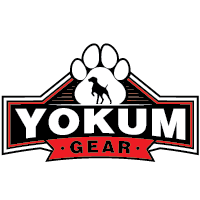Caring for a dog with mobility issues can be a challenging yet rewarding experience. One essential tool that makes a significant difference is a rear-leg harness. This guide will help you understand what factors to consider when choosing the right harness for your furry friend.
Understanding the Need for a Rear-Leg Harness
Rear-leg harnesses are specially designed to support dogs with hind leg weaknesses or disabilities. They are particularly useful for dogs suffering from conditions such as arthritis, hip dysplasia, spinal injuries, or recovering from surgery. These harnesses help improve your dog's mobility, reduce pain, and provide stability, making daily activities more manageable.
Factors to Consider When Choosing a Rear-Leg Harness
1. Fit and Comfort
The most crucial aspect of selecting a harness is ensuring it fits your dog properly. An ill-fitting harness can cause discomfort, chafing, or even worsen existing issues. Measure your dog's girth, waist, and the distance from their hips to their front legs to find the most accurate size. Look for harnesses with adjustable straps to provide a customizable fit, ensuring your dog is comfortable and secure.
2. Material and Durability
The material should be soft yet sturdy to withstand daily use. Look for harnesses made from high-quality, breathable fabrics that provide comfort and are easy to clean. Reinforced stitching and durable hardware like buckles and D-rings are essential for longevity.
3. Type of Support
Rear-leg harnesses come in different designs to provide varying levels of support. Some harnesses support the dog's abdomen and hindquarters, while others support only the hips. Consider your dog's specific needs, medical condition, and level of mobility when selecting the type of support. For example, full-body harnesses might be better for dogs with severe disabilities, whereas hip-support harnesses might be suitable for dogs with mild issues.
4. Ease of Use
A harness should be easy for you to put on and take off your dog. Look for features like quick-release buckles and step-in designs. Additionally, consider how easy it is to lift your dog using the harness. Handles should be ergonomically designed to provide a comfortable grip without straining your hands or back.
5. Adjustability
As your dog's condition changes, the need for different levels of support may arise. Harnesses with adjustable features allow you to modify the fit and support as needed. This is particularly useful for growing puppies or older dogs whose mobility might fluctuate.
6. User Reviews and Recommendations
Before making a purchase, read user reviews and seek recommendations from veterinarians or pet rehabilitation specialists. They can provide valuable insights into the effectiveness, durability, and comfort of various harnesses based on real-world experiences.
Popular Rear-Leg Harness Brands
Some reputable brands that offer high-quality rear-leg harnesses include:
- Walkin' Pets: Known for their Walkin' Lift Rear Harness, which provides excellent support and comfort.
- Help ‘Em Up: Offers a full-body harness with handles for lifting, ideal for dogs with significant mobility issues.
- Ruffwear: Features durable, well-constructed harnesses with adjustable straps for a customizable fit.
- GingerLead: Specializes in rear-support harnesses that are easy to use and provide substantial support for both dogs and handlers.
Conclusion
Choosing the right rear-leg harness for your dog involves careful consideration of fit, material, support type, ease of use, and adjustability. By selecting a harness that meets your dog's specific needs, you can significantly enhance their quality of life and ensure they remain as mobile and comfortable as possible. Always consult with your veterinarian to ensure you're making the best choice for your pet's health and well-being.

